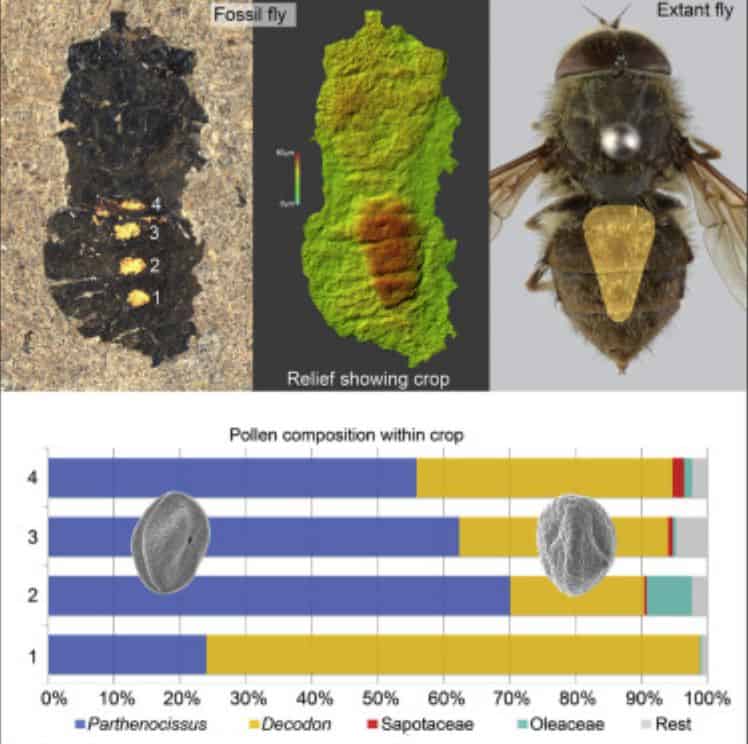An international team of scientists has discovered a 47 million-year-old fossilized fly with a belly full of pollen. This finding is the first direct evidence that some species of the ‘Nemestrinidae’ family fed on the microspores of various subtropical plants.
When people think of a pollinating insect, many imagine a bird, a bee, or a butterfly. But very few people think of a fly, even though it is generally the second most important pollinating insect.
- Neuroscience Breakthrough: Study Pinpoints Brain Activity That Helps Prevent Us From Getting Lost
- Brief Anger Hampers Blood Vessel Function Leading to Increased Risk of Heart Disease and Stroke – New Study
- New Blood Test Pinpoints Future Stroke Risk – Study Identifies Inflammatory Molecules as Key Biomarker
- Enceladus: A Potential Haven for Extraterrestrial Life in its Hidden Ocean Depths
- New Experiment: Dark Matter Is Not As ‘DARK’ As All We Think
It turned out that millions of years ago these bugs could have played “an important role in the dispersal of various groups of plants,” says botanist Friðgeir Grímsson, from the University of Vienna (Austria).
The new fossil found in an abandoned quarry near the German city of Frankfurt and belongs to a new species of an ancient fly named Hirmoneura messelense.
The last food it ate is extremely well preserved. Under the microscope, its gut and stomach had pollen debris from at least four plant families, including the American justice plant(Avicenniaceae) and the virgin vine(Clematis virginiana), which probably grew on the forest fringes of an ancient lake.
The researchers also found long hairs, called setae, on the fly’s thorax and abdomen. Although they did not find pollen, the fact that they existed suggests that they could also have carried it when the fly moved from flower to flower. The inside of its gut suggests that it fed on a mixture of several plants that grew in close proximity.
“It is likely that the fly avoided flying long distances for food sources and sought pollen from closely associated plants,” explains the botanist.
Research on the role of flies as pollinators has long been neglected and is scarce. The new discovery supports an ancient hypothesis, according to which these insects were as important or more important in tropical environments than some bees since the Jurassic.

- Neuroscience Breakthrough: Study Pinpoints Brain Activity That Helps Prevent Us From Getting Lost
- Brief Anger Hampers Blood Vessel Function Leading to Increased Risk of Heart Disease and Stroke – New Study
- New Blood Test Pinpoints Future Stroke Risk – Study Identifies Inflammatory Molecules as Key Biomarker
- Enceladus: A Potential Haven for Extraterrestrial Life in its Hidden Ocean Depths
- New Experiment: Dark Matter Is Not As ‘DARK’ As All We Think
“The fossil fly we present here clearly fed on angiosperm pollen and consequently represents the first direct evidence of a polynivorous nemestrinid,” conclude the authors of the study, published in the journal Current Biology.